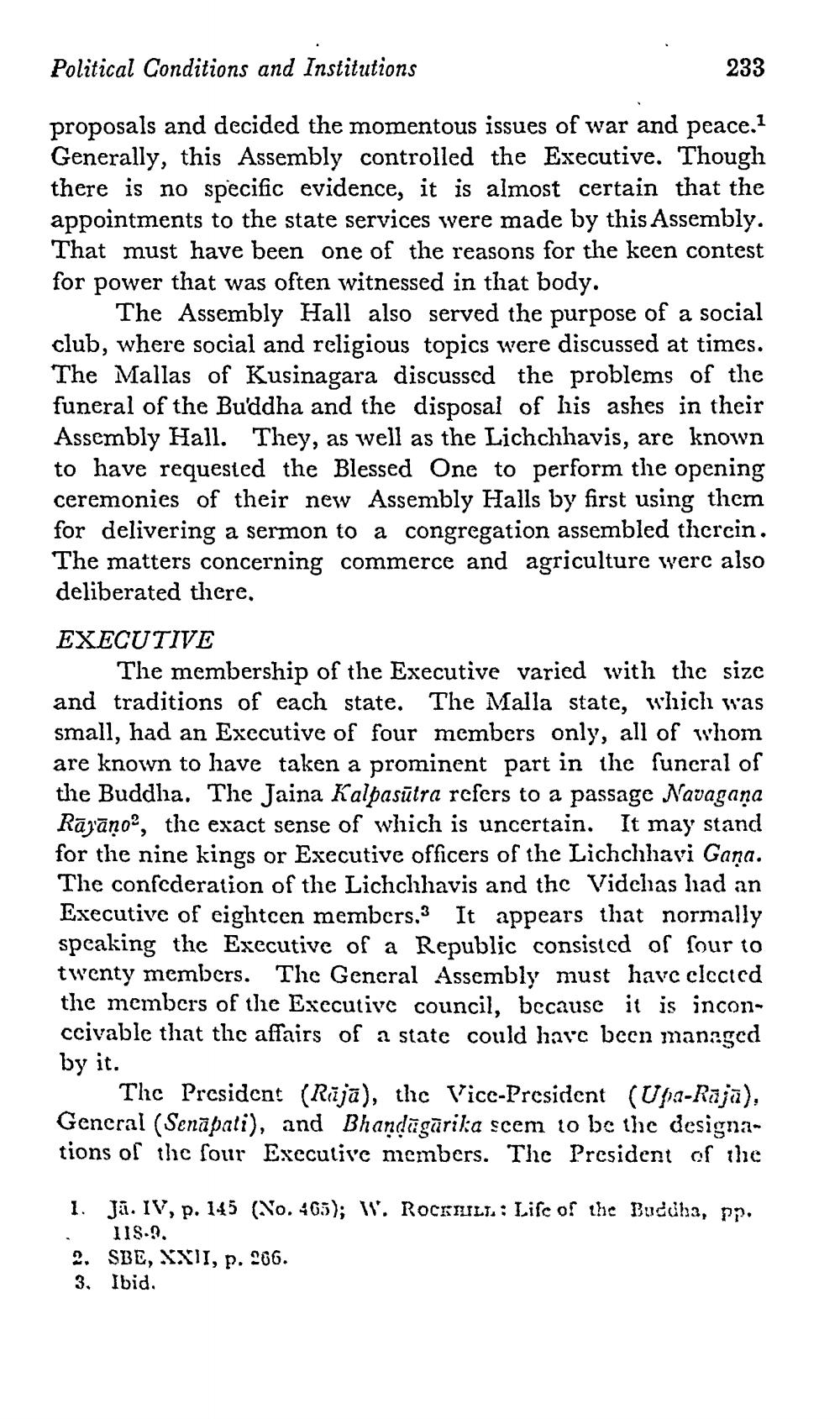________________
Political Conditions and Institutions
233
proposals and decided the momentous issues of war and peace.1 Generally, this Assembly controlled the Executive. Though there is no specific evidence, it is almost certain that the appointments to the state services were made by this Assembly. That must have been one of the reasons for the keen contest for power that was often witnessed in that body.
The Assembly Hall also served the purpose of a social club, where social and religious topics were discussed at times. The Mallas of Kusinagara discussed the problems of the funeral of the Buddha and the disposal of his ashes in their Assembly Hall. They, as well as the Lichchhavis, are known to have requested the Blessed One to perform the opening ceremonies of their new Assembly Halls by first using them for delivering a sermon to a congregation assembled thcrcin. The matters concerning commerce and agriculture were also deliberated there. EXECUTIVE
The membership of the Executive varied with the size and traditions of each state. The Malla state, which was small, had an Executive of four members only, all of whom are known to have taken a prominent part in the funcral of the Buddha. The Jaina Kalpasūtra rcfers to a passage Navagana Rājāņo, the exact sense of which is uncertain. It may stand for the nine kings or Executive officers of the Lichchhavi Gaña. The confederation of the Lichchhavis and the Videlas liad an Executive of eightcen members. It appears that normally speaking the Executive of a Republic consisted of four to twenty members. The General Assembly must have clecicd the members of the Executive council, because it is inconccivable that the affairs of a state could have been managed by it.
The President (Rījā), the Vice-President (Upa-Rajā), General (Senāpati), and Bhandīgārika scem to be the designations of the four Executive members. The President of the
1. Ja. IV, p. 145 (No. 465); W. ROCKHILL : Life of the Buddha, pp. . IIS.. 2. SBE, XXII, p. 206. 3. Ibid.




